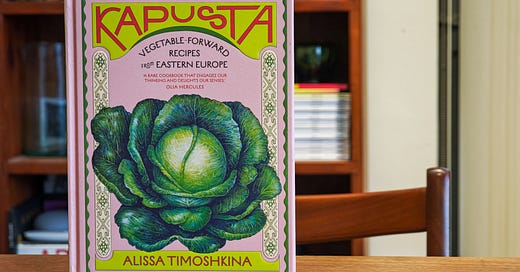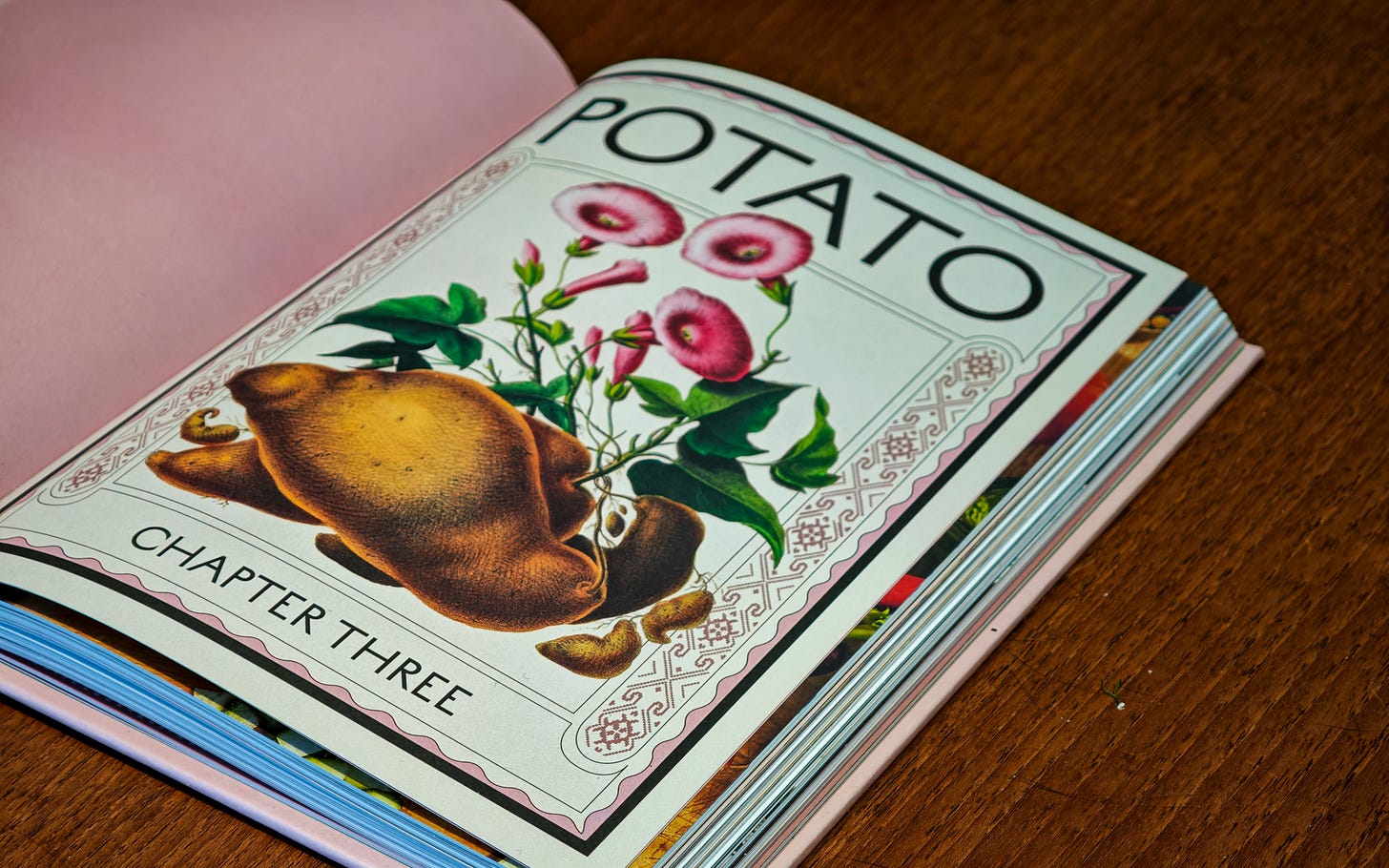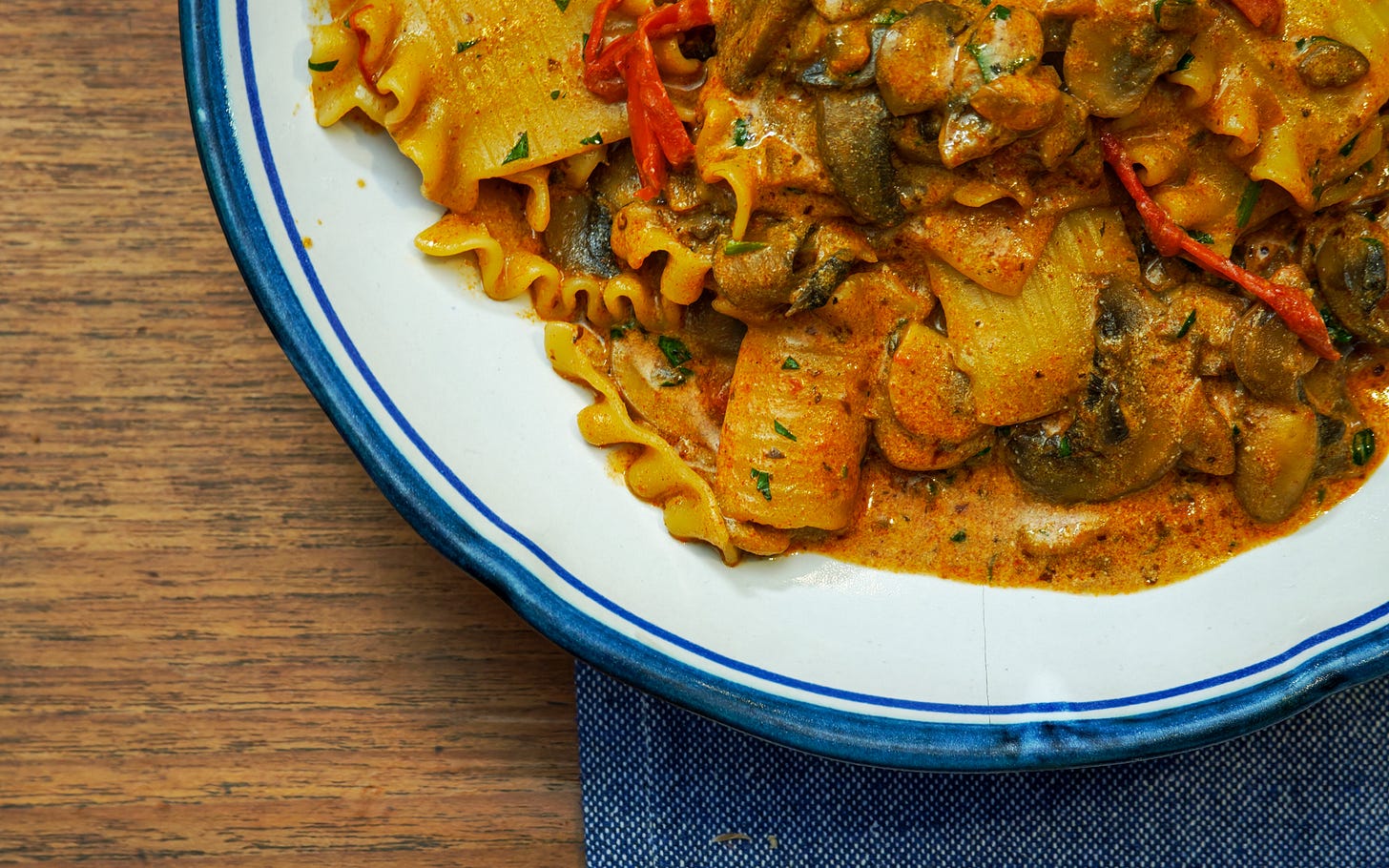‘Kapusta’ means cabbage in a few of the Eastern European languages, which makes it a fitting title for this cookbook: one that takes in recipes from nine countries over the region, prioritising those that put vegetables front and centre.
This isn’t a vegetarian cookbook, but author Alissa Timoshkina describes it as “vegetable-forward.” That means an awful lot of the recipes are vegetarian, and quite a few of the ones that aren’t include suggestions on how to make them so. Even the meat-based dishes often use it sparingly, small quantities used to add flavour while grains and vegetables fill the plate. That makes Kapusta an appealing option not only for vegetarians, but also anyone looking to cut down on their carnivorous side without eliminating it entirely.
The book is so set on vegetables that it’s structured around them: five of the seven chapters are devoted to the cabbage, beetroot, potato, carrot, and mushroom; the remaining two cover dumplings, then pickles and ferments. That helps a little if you want to approach things seasonally, but is also just good for resolving a vegetable glut in the fridge: next time I buy a kilo bag of carrots because I need a single one for a recipe, I’m pretty sure it’ll be Kapusta’s carrot chapter I turn to when I need rid of the rest.
After last month’s review of the geographically challenged Rooza, I was pleased to note that Kapusta is clear about what it takes Eastern Europe to be, even devoting a page to explaining the logic. The book ranges from the Czech Republic in the west to Ukraine in the east, from Belarus in the north to Bulgaria in the south. Timoshkina herself has Ukrainian, Polish, Belarussian, and Russian heritage, but the latter is a pointed exception from the book, for hopefully obvious reasons. There are a few recipes that come from the Eastern European end of Russia, but Timoshkina uses them to call attention to indigenous groups from the region, leaving Russia’s broader culinary culture intentionally unmentioned.
You won’t be too surprised to hear that across these pages you’ll learn to make most of the Eastern European dishes you might have heard of. There are recipes for cabbage rolls, pierogi, borsch, and paprikash. You’ll find three different types of potato salad, instructions for latkes, and the basics of homemade sauerkraut too. You will get used to cooking with caraway, and dill, and drizzling your dinner with sour cream. All of this is likely to impress, even if it probably won’t surprise. The mushroom paprikash was the first thing I cooked from Kapusta and perhaps the best, smooth and sour and smoky, while Timoshkina’s sauerkraut pierogi are likely to enter our regular dumpling rotation — no small praise in this house.
Keep reading with a 7-day free trial
Subscribe to Braise to keep reading this post and get 7 days of free access to the full post archives.







